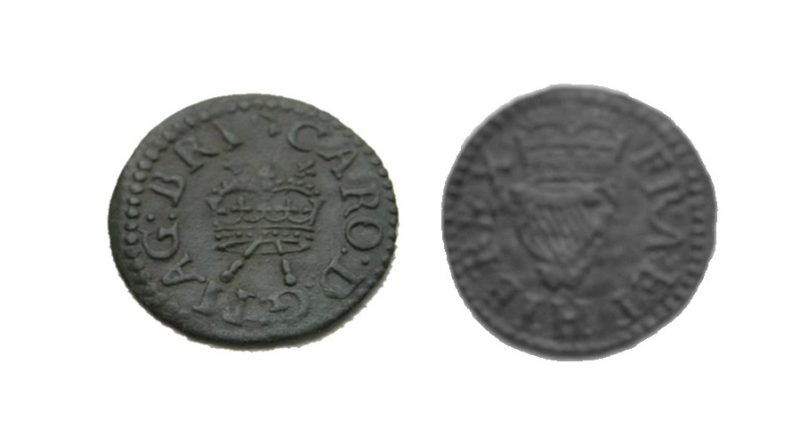Charles I, copper farthing
Colin Barton said this coin had been in his possession for same time. It’s a copper farthing of Charles I, which is only 15mm in diameter.
The last hammered silver farthings were struck during the reign of Edward VI and were only about 8mm in diameter. Thereafter the smallest silver coin in circulation was the silver halfpenny. In terms of trade, this situation meant that the lowest transaction had to be for a halfpenny. Therefore, the poor were worse off than they had been during the Anglo-Saxon period, for at that time a penny could be cut into four farthings.
Small change
There were many demands for some form of small change but the situation didn’t change until the reign of James I, when Lord Harington was given a license to make copper farthings. Soon after this the Duke of Lennox took over the license. Rather than welcoming these coins, some counties refused to accept them, for the intrinsic value was far less than a farthing. Lennox died in 1624 and the license then passed to his widow, the Duchess of Richmond.
Besides condemning the farthings for being underweight, the general public often complained about the number of forgeries that circulated far and wide. It is said that 25 shilling’s worth of forgeries could be bought of £1 or less.
Traders Tokens
When Charles I became king in 1625 the Duchess of Richmond continued to issue farthings. Lord Maltravers took over in 1634 and farthings continued to be struck until December of 1644. After the ‘official’ farthings ceased to circulate the lack of small change started to be made up by traders’ tokens. At the last count roughly 15,000 different tokens were issued and the number continues to rise due to previously unpublished specimens being found by detectorists.
It was not until 1672 that the mint started to issue copper farthing and halfpennies. For this first time, the intrinsic value was very close to their face value.
Colin’s coin
Colin’s find is a type 2 Richmond farthing of Charles I. On the obverse is a crown upon crossed sceptres and on this side the legend reads CARO DG MAG BRIT On the reverse is a crowned harp and a FRA ET HIB REX legend. The mint marks on copper farthings don’t conform to those on the silver and gold coins of Charles I. The mark on this coin (obverse only) is peculiar but I’d suggest it is probably meant to represent a fleece.
Valuation
Detectorists do find a few farthings of Charles I but when they surface they are usually in a corroded state. This one is way above average, for it is well struck and in VF condition. The catalogue price is £30 but this one is so nice that a keen collector might pay over the odds in order to acquire it.
Coin Valuation Service
Have your coin or artefact valued using my free online coin valuation service

